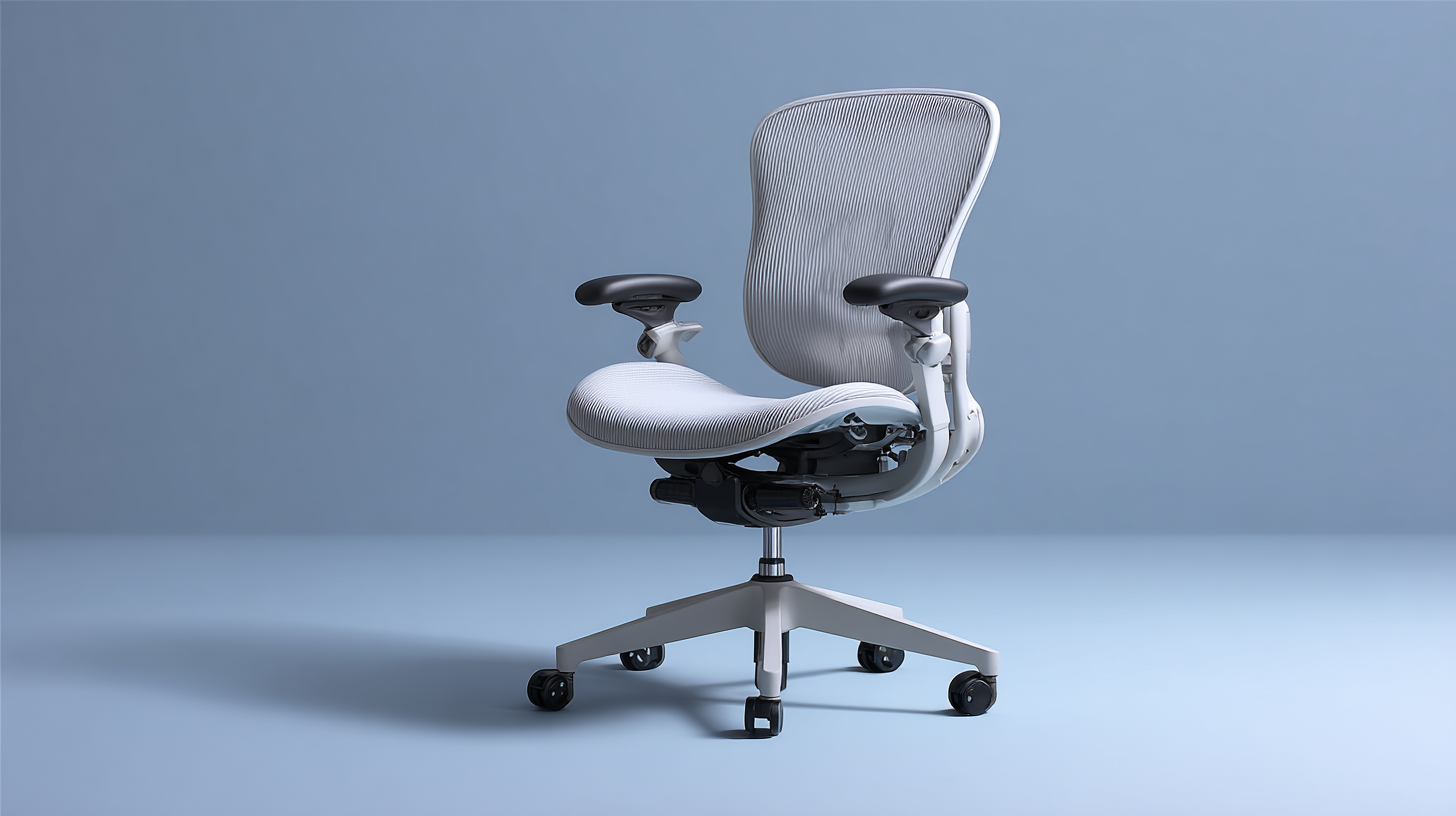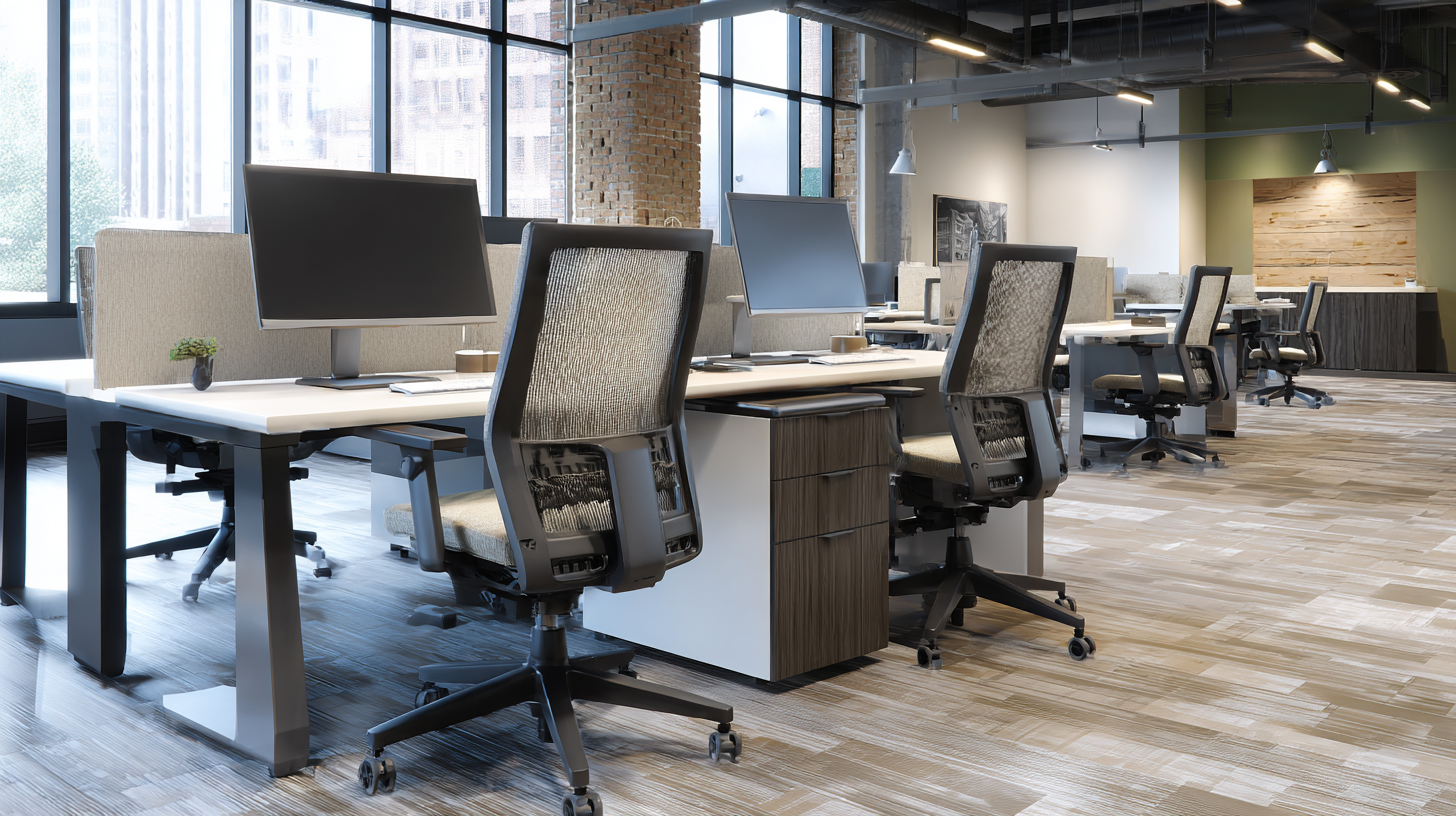Top Strategies for Selecting the Best Ergonomic Desk Chair for Your Workplace
In today's fast-paced work environment, the importance of a well-designed ergonomic desk chair cannot be overstated. According to a report by the American Chiropractic Association, back pain affects 31 million Americans at any given time, highlighting the critical need for proper seating solutions in the workplace. An ergonomic desk chair not only enhances comfort but also boosts productivity, as research from the University of Southern California indicates that investing in ergonomic office furniture can lead to a 17% increase in productivity. With employees spending an average of 8-10 hours a day seated, selecting the best ergonomic desk chair is essential for promoting health and well-being while also improving workplace efficiency. Understanding the nuances of ergonomic design is key to making informed choices that benefit both employees and employers alike.

Key Features to Look for in an Ergonomic Desk Chair
When selecting the best ergonomic desk chair for your workplace, certain key features are essential to ensure you achieve optimal comfort and support throughout your workday. First and foremost, an ergonomic design is crucial. Chairs that promote proper posture help prevent discomfort and reduce the risk of long-term health issues associated with prolonged sitting. Look for models that offer lumbar support, which is vital for maintaining the natural curve of your spine.
Another important feature is adjustable height. A chair that can be tailored to your individual needs allows for better alignment with your desk, reducing strain on your neck and shoulders. Additionally, consider durable materials that not only enhance longevity but also provide comfort. Features such as anti-slip feet can improve stability, especially if you tend to shift positions frequently. Investing in a chair with these characteristics ensures that you create a conducive work environment that supports productivity and well-being.

Understanding Different Ergonomic Designs and Their Benefits
When it comes to ergonomics, understanding the various designs of ergonomic desk chairs can significantly enhance the comfort and productivity of your workspace. Ergonomic chairs are meticulously engineered to support the natural posture of the body, reducing the risk of discomfort and fatigue during long hours of sitting. Key features to consider include adjustable height, lumbar support, and breathable materials. These elements work together to improve circulation and provide necessary support for the lower back, which is crucial in preventing injuries and promoting overall well-being.

Additionally, the growing trend of human-centric design emphasizes the importance of tailoring workspaces to meet the specific needs of users. This philosophy extends beyond just desk chairs; it includes a holistic approach to creating environments that prioritize comfort and efficiency. For instance, integrating ergonomic keyboards and mice, along with adjustable desks, can create a seamless workflow that further mitigates strain on the body. By investing in ergonomic solutions, companies can foster a healthier and more engaging workplace, leading to improved employee satisfaction and productivity.
The Importance of Adjustable Components for Comfort
When it comes to choosing the best ergonomic desk chair for your workplace, the significance of adjustable components cannot be overstated. An adjustable chair allows for a personalized fit that accommodates individual body types and preferences, promoting better posture and enhancing overall comfort during long hours of work. Features such as adjustable seat height, lumbar support, and armrest height all play a crucial role in providing support where it's needed most. This adaptability is essential in preventing common discomforts associated with prolonged sitting.
Moreover, adjustable components cater to dynamic work environments, where employees may change tasks frequently. A chair that can easily transition from a high to a low setting or allow the user to modify the backrest angle can significantly improve productivity. For instance, the ability to adjust the depth of the seat can help support smaller or taller users effectively, aligning their knees and hips for optimal circulation and comfort. Investing in a chair that prioritizes these adjustable features is a key step towards creating a healthier and more efficient workspace.
Materials Matter: Choosing the Right Fabric and Padding
When selecting the best ergonomic desk chair for your workplace, the materials used in its construction play a crucial role in both comfort and durability. According to the Health and Safety Executive, inadequate seating can lead to significant discomfort and, over time, musculoskeletal disorders. Therefore, choosing the right fabric and padding is imperative. For instance, mesh materials offer breathability, which helps regulate body temperature during long hours of sitting, while high-density foam padding can provide optimal support and reduce pressure points.
Tip: Look for chairs made with moisture-wicking fabrics if you work in a warm environment. This feature keeps you dry and comfortable, enhancing your productivity throughout the day.
Additionally, the upholstery should be easy to clean, especially in shared workspaces. A report from the Ergonomics Society highlights that users of ergonomic chairs tend to feel more satisfied when they can maintain their seating environment effortlessly. Materials like PU leather or stain-resistant fabrics can be advantageous in ensuring longevity while maintaining a professional appearance.
Tip: Test the chair's padding by sitting in it for at least 15 minutes to gauge comfort levels. The right padding should mold to your body and support you without feeling overly firm or too soft.
Top Strategies for Selecting the Best Ergonomic Desk Chair for Your Workplace
How to Test a Chair for Fit and Support Before Buying
When considering the purchase of an ergonomic desk chair, testing it for fit and support is crucial to ensure it meets your specific needs. Start by adjusting the chair to its lowest and highest settings, allowing you to find the optimal position for your height. When seated, your feet should rest flat on the floor with your knees at a 90-degree angle. Assess the chair's backrest; it should support the natural curve of your spine without pushing you forward or backward uncomfortably.
Next, evaluate the seat depth and width. You should be able to sit back against the backrest while leaving a few inches between the back of your knees and the front of the seat to avoid compression. Armrests are another important feature; they should allow your shoulders to relax and your arms to stay close to your body. Test the chair's mobility by rolling it across the floor to ensure it moves smoothly, as this will enhance your productivity and comfort in the workplace. Taking the time to test these features can lead to a more supportive and healthier sitting experience.
Top Strategies for Selecting the Best Ergonomic Desk Chair for Your Workplace - How to Test a Chair for Fit and Support Before Buying
| Dimension | Recommendation | Testing Method |
|---|---|---|
| Seat Height | Adjustable from 16 to 21 inches | Sit with feet flat on the ground |
| Seat Depth | Adjustable or between 16 to 18 inches | Ensure 2-4 inches between back of knees and chair |
| Backrest Height | Adjustable and contoured | Check lower back support while seated |
| Armrest Height | Adjustable with soft padding | Should allow relaxed shoulders |
| Weight Capacity | Supports 250 to 400 pounds | Check product specifications |
| Material Quality | Breathable mesh or durable fabric | Inspect for flexibility and durability |
| Mobility | 5-point base with smooth-rolling casters | Test movement and stability |
